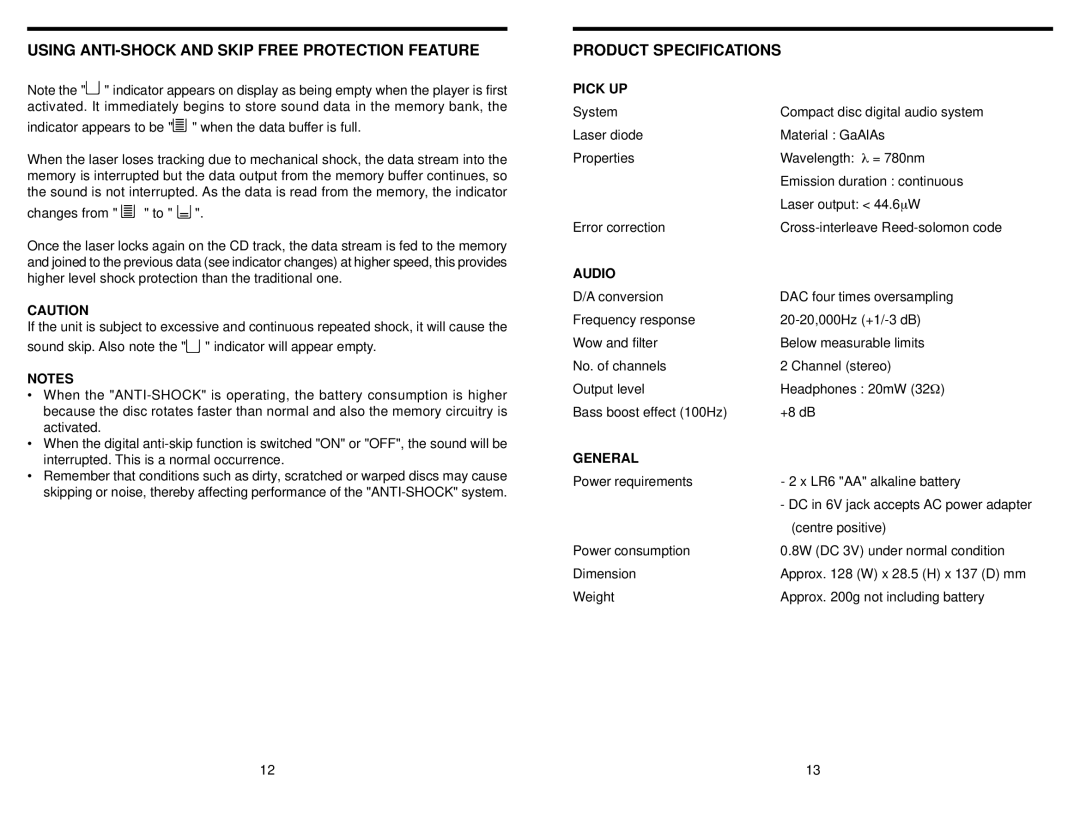
USING ANTI-SHOCK AND SKIP FREE PROTECTION FEATURE
Note the " " indicator appears on display as being empty when the player is first activated. It immediately begins to store sound data in the memory bank, the
indicator appears to be " " when the data buffer is full.
" when the data buffer is full.
When the laser loses tracking due to mechanical shock, the data stream into the memory is interrupted but the data output from the memory buffer continues, so the sound is not interrupted. As the data is read from the memory, the indicator
changes from " ![]() " to "
" to " ![]() ".
".
Once the laser locks again on the CD track, the data stream is fed to the memory and joined to the previous data (see indicator changes) at higher speed, this provides higher level shock protection than the traditional one.
CAUTION
If the unit is subject to excessive and continuous repeated shock, it will cause the sound skip. Also note the "![]() " indicator will appear empty.
" indicator will appear empty.
NOTES
•When the
•When the digital
•Remember that conditions such as dirty, scratched or warped discs may cause skipping or noise, thereby affecting performance of the
PRODUCT SPECIFICATIONS
PICK UP |
|
System | Compact disc digital audio system |
Laser diode | Material : GaAlAs |
Properties | Wavelength: λ = 780nm |
| Emission duration : continuous |
| Laser output: < 44.6∝W |
Error correction | |
AUDIO |
|
D/A conversion | DAC four times oversampling |
Frequency response | |
Wow and filter | Below measurable limits |
No. of channels | 2 Channel (stereo) |
Output level | Headphones : 20mW (32Ω) |
Bass boost effect (100Hz) | +8 dB |
GENERAL |
|
Power requirements | - 2 x LR6 "AA" alkaline battery |
| - DC in 6V jack accepts AC power adapter |
| (centre positive) |
Power consumption | 0.8W (DC 3V) under normal condition |
Dimension | Approx. 128 (W) x 28.5 (H) x 137 (D) mm |
Weight | Approx. 200g not including battery |
12 | 13 |
